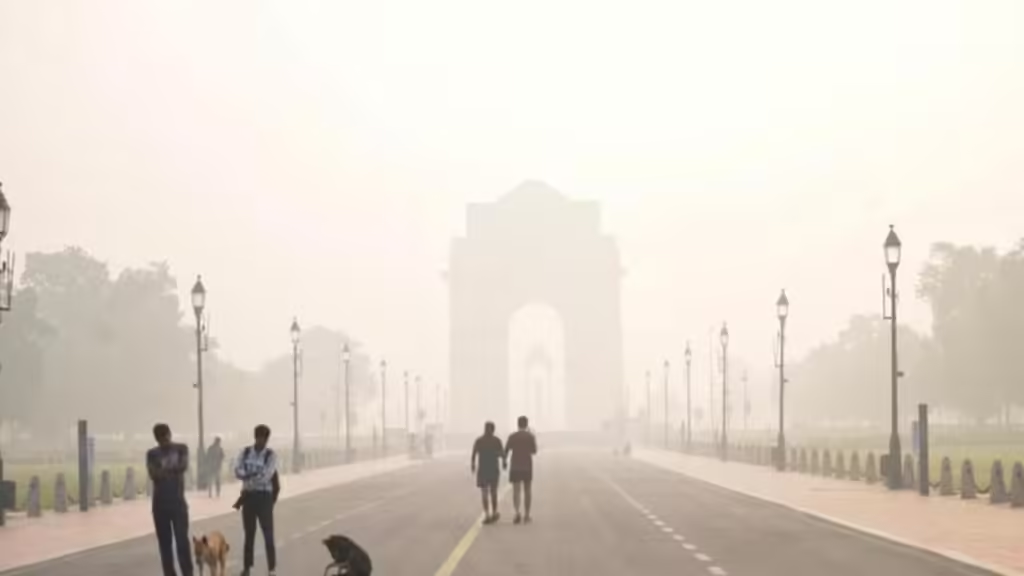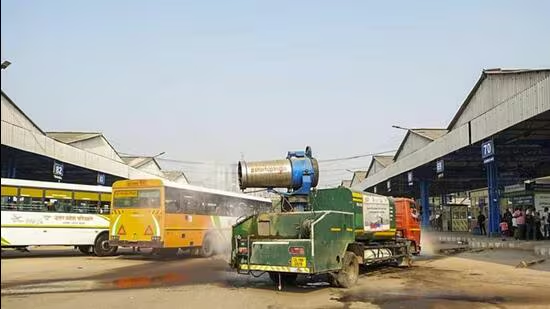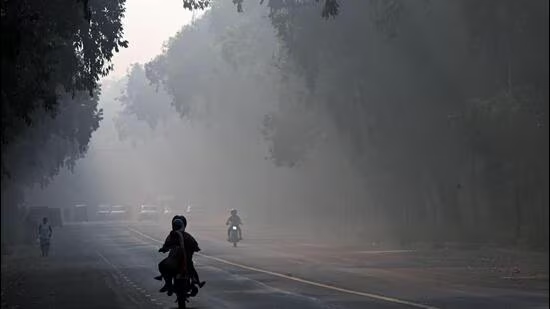The Highlights:
The notorious winter air pollution in Delhi is back again, as the AQI has risen to hazardous levels, with several parts of the city crossing 400 on October 24, 2024, making it fall into the “severe” category. This massive rise in pollution is primarily because of more stubble burning in neighboring states combined with unfavourable weather conditions – low wind speeds and temperature inversion that choked the dispersal of pollutants.
Stubble burning and its effects on air quality
Stubble burning from Punjab, Haryana, and Uttar Pradesh continues to contribute significantly to the air quality crisis in Delhi. Although the government initiated various measures like giving sub-committee subsidies to machinery to avoid crop residue burning, the farmers burnt crops due to it serving as an economical way of clearing fields. Since mid-October, more than 500 cases have been reported; the coming days will see a sharp increase.

This massive burning emission sends a huge amount of particulate matter (PM2.5 and PM10) into the air, which severely deteriorates the air quality in Delhi and the National Capital Region. PM2.5 and PM10 particles enter the lungs and subsequently the bloodstream deep inside the human body. It creates severe medical issues for the susceptible groups such as infants, elderly people, and people with pre-existing respiratory diseases.
Unfavorable Weather Conditions Worsen the Crisis
Matters would be bad enough, but compound that with the prevailing weather condition in Delhi: it’s worse. The India Meteorological Department has forecasted the flow of calm weather and lower speed wind over the next days, which would generate a kind of stagnant air situation with it carrying pollutants near the surface. With two factors-high emissions and poor dispersion mechanisms-it has already led to scary trends for pollution level in the Capital.

Until October 24, areas like Anand Vihar and Mundka crossed AQI over 400, and many other areas fell in the “very poor” category. Concentration of particulate matter in the air has crossed permissible limits, with some areas reaching PM10 concentrations above 1,400 µg/m³-a far cry from Central Pollution Control Board’s safe limit of 100 µg/m³.
Government Action: The Graded Response Action Plan (GRAP)
The alarmingly increasing levels of pollution has compelled the Delhi government to invoke Stage 2 of Graded Response Action Plan (GRAP). GRAP is an emergency response plan launched in 2017 to address the problem based on the levels of AQI. Its major steps include a ban on the use of diesel generators, surcharging parking fees, and more water sprinkling to control dust on roads.
Anti-smog guns have been placed throughout the city to spray fine mist, hoping that all dust particles in the air will settle. The government has also issued an advisory asking residents to limit their outdoor activities, specifically during early morning and late evening when pollution peaks.
Health Impacts and Public Advisory
Hazardous air quality in Delhi is causing widespread health problems and reeling hospitals with respiratory distress complaints, eye irritation, and throat infection. According to experts, chronic diseases will increase asthma, cardiovascular diseases, or even premature death if exposure to high levels of particulate matter prevails in the public atmosphere for a long time.
Everyone has been advised to remain indoors for long hours with windows shut, and use air purifiers inside homes and office to reduce the poisonous pollution inside rooms. It is recommended to wear N95 masks outdoors. Schools in Delhi will again be closed to study if the situation worsens because pollution is considered a serious risk to children.
Long-Term Remedies: What Needs to Be Done?
While immediate measures like GRAP help momentarily regulate pollution, this is definitely a long-term issue that needs to be addressed to avoid recurrence of such an air quality crisis. Experts have said that a multi-pronged approach is necessary with stronger enforcement of farm fire ban, increased green cover in urban areas, and a switch to cleaner energy sources for industries and vehicles.
The administration has taken a big step forward in encouraging the use of electric vehicles, though in untidy steps. The policies are to be more stringent so Delhi does not become one of the cities that promise all yet fail to achieve that promise of clean air without severely hampering the air quality.
Conclusion
Delhi’s pollution crisis continues unabated: Delhi’s air quality drops to alarming levels as air deteriorates once again. With the stubble burning still pertinent, deteriorating weather conditions, and health of millions of citizens in danger, immediate relief remains available through the government’s direct action under GRAP but long-term solutions remain the only antidotes that can prevent this annual environmental and public health disaster from rearing its head.
As residents steel themselves for a hard winter, local and national authorities must now increase the battle to resolve this ongoing air quality crisis.
For Latest News Updates Click Here
